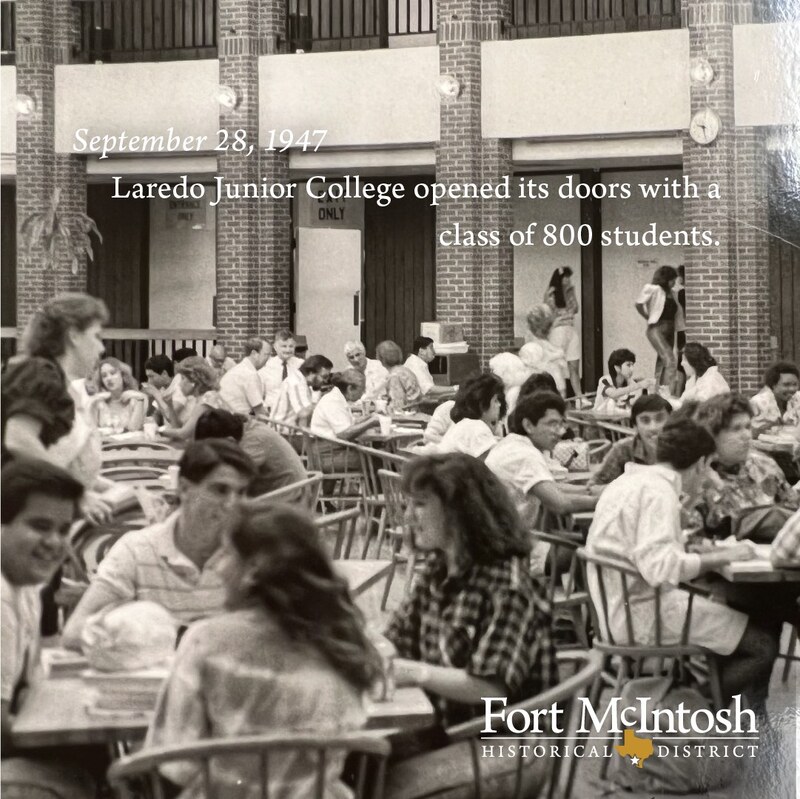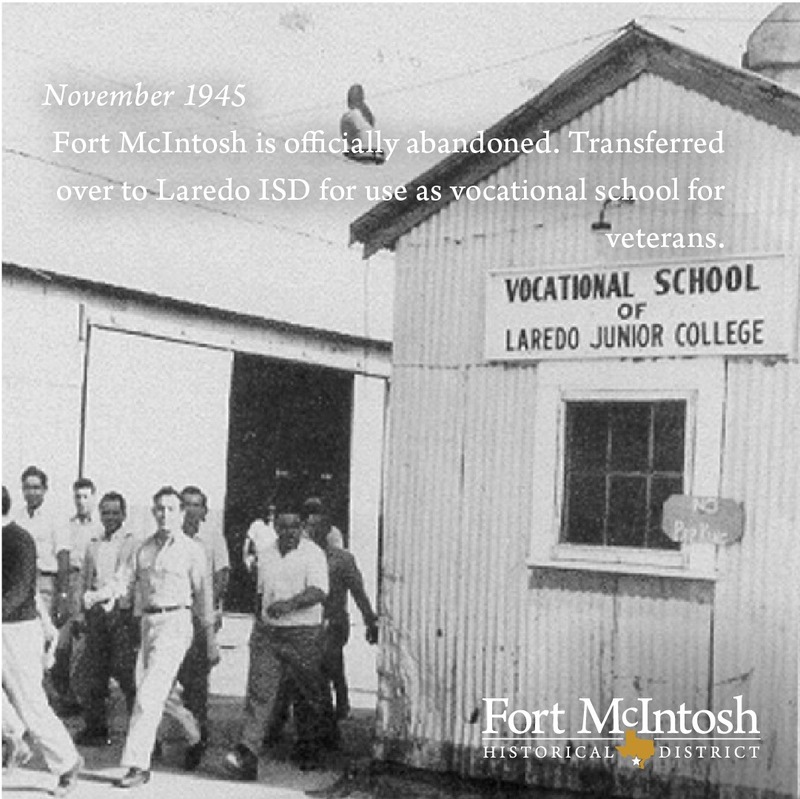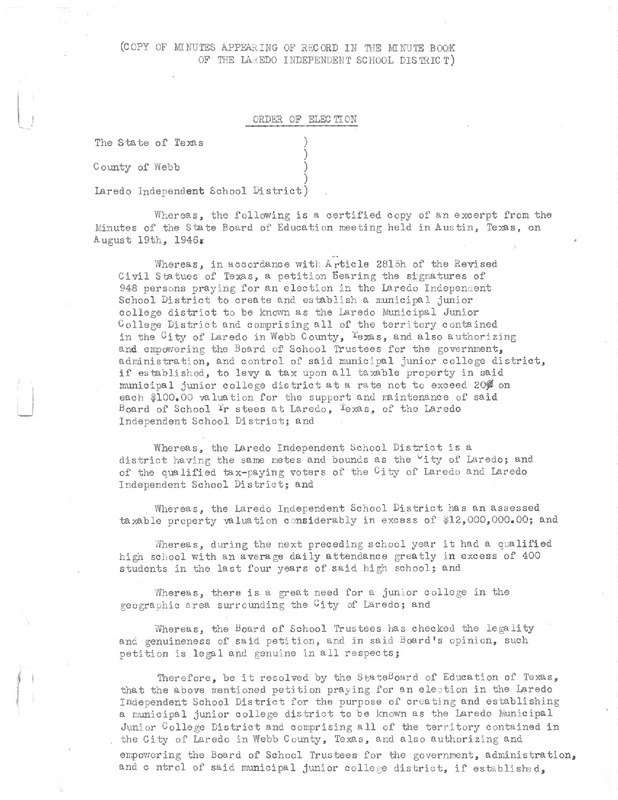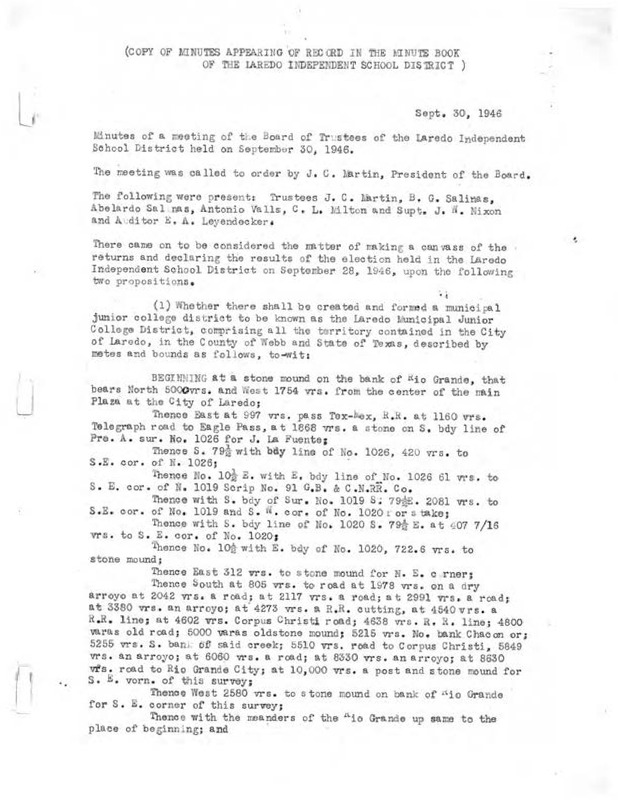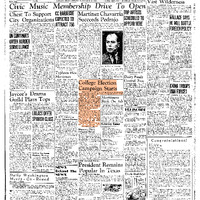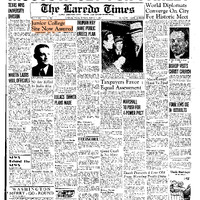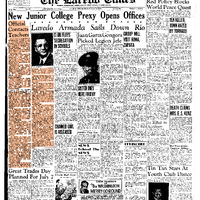LISD Board of Trustees Creates Laredo Junior College for Incoming War Veterans
Laredo College has had a long-standing history since before it was even a college. It was established as Camp Crawford in March 1849, located on 200 acres west of Laredo near the point of an old Spanish and Indian river crossing. It was to house military troops serving the Mexican-American war and to protect Laredo’s frontier. It was later renamed in 1850 in honor of Lieutenant Colonel James Simmons McIntosh, a fallen officer who sacrificed his life at the Battle of Molino del Rey. Fort McIntosh was one of a series of forts along the frontier. The fort and the military buildings inside are listed on the National Register of Historic Places. Fort McIntosh served many purposes throughout the Civil, Spanish-American, World War I and World War II.
At the end of World War II, the War Department returned over four million soldiers to the United States, with over 600,000 veterans returning to Texas. The government decided to centralize its military into the country's newer interior forts and close-border older facilities like the Fort McIntosh Fort. The Fort was owned by the government and the land was returned to the City of Laredo. Congress then passed the G.I. Bill in 1944, which provided many benefits for the soldiers returning from the war. Benefits included federal government aid like low-cost mortgages, low-interest loans, and one year of payments for tuition and living expenses to attend a high school, college, or vocational school. The City of Laredo also had an excess of 400 students graduate in the last four years of high school.
Fort McIntosh, now closed was now a territory within the Laredo Independent School District area. With all of this in mind, the LISD Board of Trustees then proposed a petition to establish The Laredo Municipal Junior College District by using the Fort McIntosh property valued at over 12 million dollars to provide educational access to veterans and anyone who wanted to pursue a higher education. Students will have the opportunity to focus on specific fields of study such as technology, healthcare, or the arts. The college would also contribute to the economic and social development of the Laredo Community. The LISD Board of Trustees would also govern, administer and control over said college. The minutes of the meeting of the LISD Board of Trustees on September 30, 1946, show that an election was passed to establish a municipal college district.
Laredo Junior College was finally established in September of 1946 to prepare for the returning World War II soldiers for the workforce. The first classes had an enrollment of 800 students and grew rapidly to over 1745 by 1950 as more veterans enrolled. The school's founding president, W.J. Adkins served from 1947 to 1960.
An Interview with Judge Mercurio Martinez
I met with one of Laredo College's most notable figures, the honorable Judge Mercurio Martinez, who has been part of the college administration since the 1960s. Judge Martinez has been a Laredo College student, instructor, and administrator. He was appointed to the joint board overseeing both L.I.S.D. and Laredo Junior College. It was he who implemented the separation into two boards. Mr. Mercurio Martinez currently serves on the Board of Trustees for Laredo College. He explains in this interview the beginnings of Laredo College and it’s amazing transformation over the years.
Laredo Junior College was established within the LISD School District, which was part of the city limits. Martinez confirms how the college was opened due to the influx of veterans returning from the war. Since Fort McIntosh was closed, the idea came to open it up as a college. The large population of the students were soldiers of World War II and later continued to Korean Veterans. When he started to teach in 1959, most of the students that were there were Korean Veterans who served in the armed forces. One of the challenges they had to overcome was teaching in barracks. Those barracks needed to be knocked down and rebuilt into classrooms.
He has always been a strong believer in making quality education accessible to all. He has been involved with Laredo College in different ways and contributed to the college by participating on the LISD and Laredo College Boards and serving as their president, giving guest lectures, mentoring students, and participating in community outreach programs.
References
Access Newspaper Archive Institutional Version | Unauthorized User. (n.d.). Access.newspaperarchive.com. Retrieved July 30, 2024, from https://access.newspaperarchive.com/laredo-times/1946-09-22/
Access Newspaper Archive Institutional Version | Unauthorized User. (n.d.). Access.newspaperarchive.com. Retrieved July 30, 2024, from https://access.newspaperarchive.com/laredo-times/1947-03-09/
Access Newspaper Archive Institutional Version | Unauthorized User. (n.d.). Access.newspaperarchive.com. Retrieved July 30, 2024, from https://access.newspaperarchive.com/laredo-times/1947-07-04/
Copy of Minutes Appearing of Record in the Minute Book of the Laredo Independent School District, The State of Texas County of Webb Laredo Independent School District (August 19, 1946) Retrieved from the Laredo College Presidents Office July 19, 2024
Copy of Minutes Appearing of Record in the Minute Book of the Laredo Independent School District, The State of Texas County of Webb Laredo Independent School District (September 30, 1946) Retrieved from the Laredo College Presidents Office July 19, 2024
Laredo College. (2024). Laredo.edu. https://www.laredo.edu
Mercurio & Mrs. Martinez | VOCES. (n.d.). Voces.moody.utexas.edu. Retrieved July 30, 2024, from https://voces.moody.utexas.edu/collections/stories/mercurio-mrs-martinez
Martinez, M. (2024, July 12). Interview with Mercurio Martinez (D. Hinojosa, Interviewer) [Review of Interview with Mercurio Martinez].

